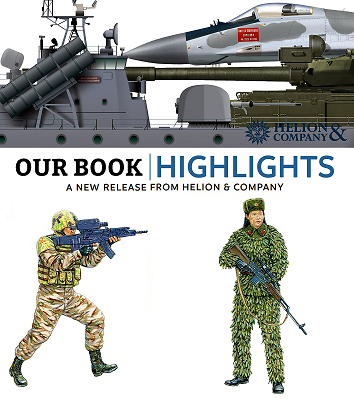By Stijn Mitzer and Joost Oliemans
The continued delivery of arms and equipment to the war-thorn country of Ethiopia remains largely unreported on, and its impact on the situation on the ground is at the moment largely unknown. What is known however is that the constant attrition of Ethiopia's military arsenal has led the country to scrounge the planet for anyone willing to supply it with additional weaponry, which has even included Mohajer-6 unmanned combat aerial vehicles (UCAVs) from Iran. These UCAVs now operate alongside Israeli and Chinese designs, showing just how complicated the modern day network of foreign arms suppliers has become.
Another country that has repeatedly voiced its support for the Ethiopian government is the United Arab Emirates. What exactly this support has so far entailed is still the subject of debate. The oft-repeated claim of Emirati drones operating out of the UAE's Assab air base in Eritrea on behalf of the Ethiopian government appears to hold little ground in reality, with no evidence pointing towards the presence of Emirati Wing Loong UCAVs over the battlefield either in 2020 or now.
Nonetheless, large Il-76 transport aircraft frequently fly between the UAE and Harar Meda, Ethiopia's largest air base. [1] Although the contents of their cargo can only be guessed at, they are likely to contain military-grade items, with humanitarian aid instead delivered to the country's civilian airports. The Il-76s operating on behalf of the UAE regularly land as Iranian aircraft of the same type bring in weapons systems as well, a clear indication of the sheer volume of arms being shipped to Ethiopia on a daily basis. [1] Previous UAE arms shipments to Ethiopia are known to have included large volumes of small arms produced by the Caracal company, which produces a number of modern small arms designs. Much like the Israeli TAR-21 assault rifle also in service with Ethiopia, the weaponry supplied by Caracal was solely distributed to the Republican Guard (RG). The RG is tasked with defending Ethiopian officials and important buildings from threats and attempted attacks. For this purpose it operates a number of modern small arms designs and light (armoured) vehicles. In recent times the RG saw its tasks expanding to the point where they now actively participate in the Tigray War as one the country's better-trained forces.
Arguably the sleekest Caracal design delivered to Ethiopia is the semi-automatic CAR 817DMR designated marksman rifle chambered in 7.62x51mm NATO. Equipped with a 10 or 20 round magazine, the CAR 817DMR offers considerable improvements in all relevant parameters over the PSL and SVD DMRs in use with the Ethiopian Army. Although presumably in use with Republican Guard forces currently deployed to stem the Tigray Defence Force's (TDF) advance into Ethiopia, no captured examples have shown up in the hands of TDF fighters so far.
Wether the continued influx of weaponry to Ethiopia will be enough to save a military that is increasingly dependent on militias remains to be seen. The small numbers of UAE small arms will undoubtedly have little impact on the ultimate outcome of the civil war. However, these weapons are representative of what in the meantime has become a highly diverse arsenal of weaponry in service with the Ethiopian military, an arsenal that will assuredly continue to play a significant role in a war which is about to enter its second year.







